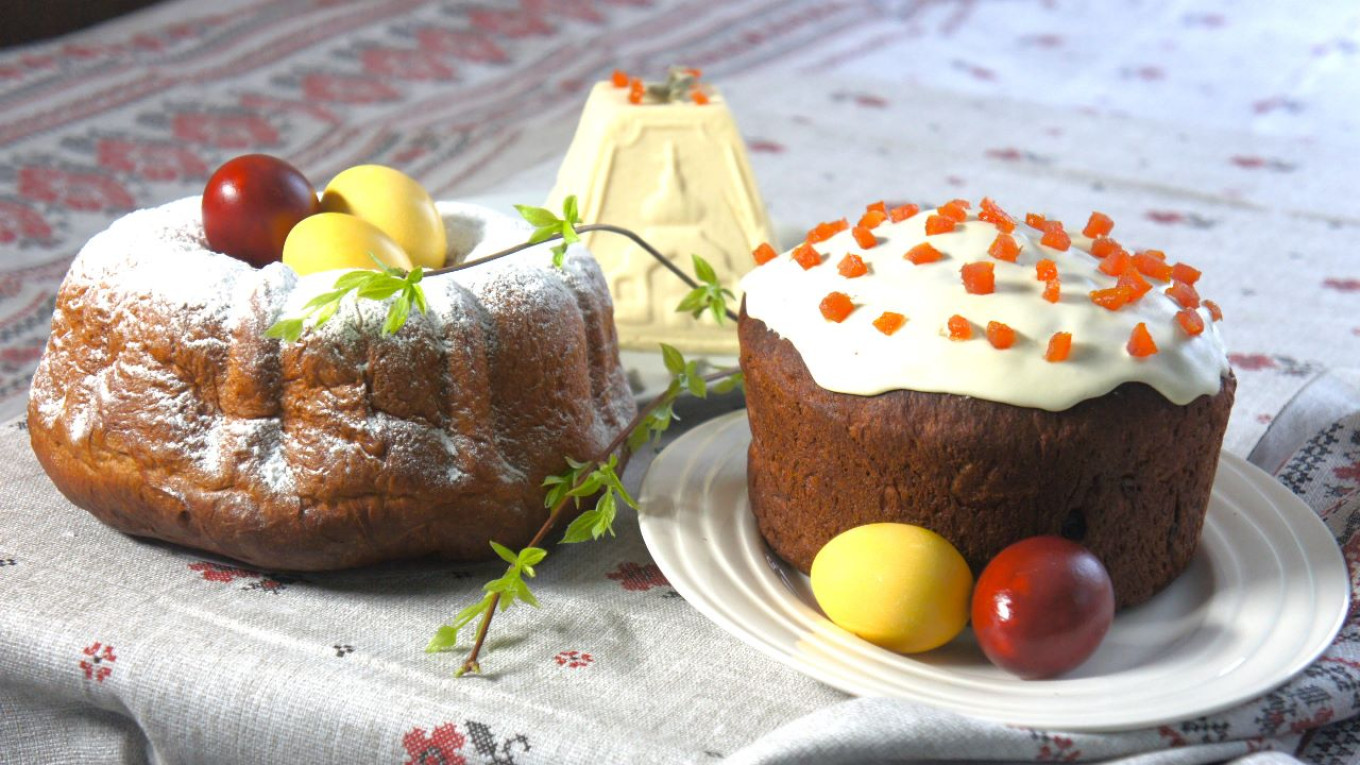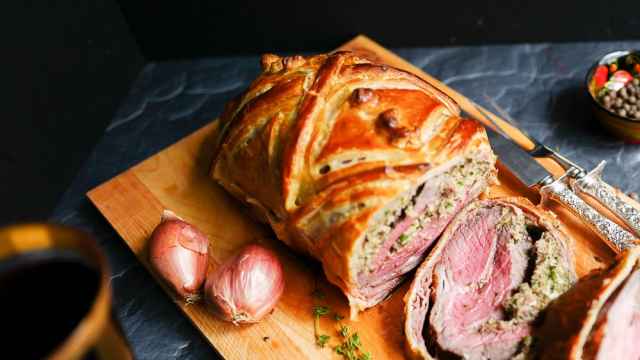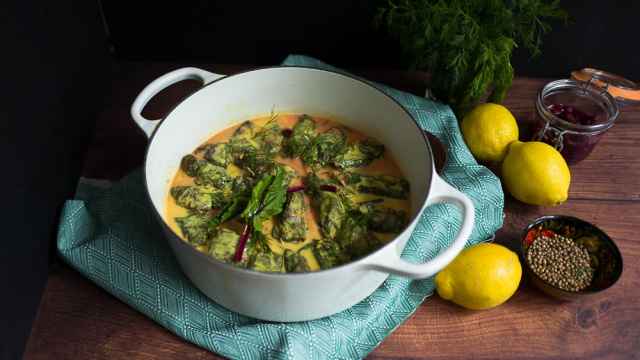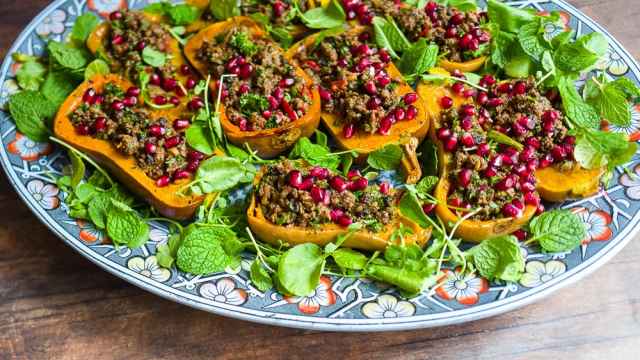Orthodox Easter, which is celebrated next Sunday, is impossible to imagine without kulich — tall and airy cakes iced with sweet fondant. The cakes the people bring to church on Holy Saturday to be blessed look like this. But have they always been this way?
Today's delicate cake is not an ancient recipe. Russian baked goods could not have been like this a few centuries ago. Yes, kulich was always a festive cake, made from expensive wheat flour. But it is impossible to imagine that even in the early 19th century a peasant household had special molds (made of what — clay or copper?) to bake them. But we can recreate what that ancient kulich looked like. Let's try to unravel this culinary mystery.
Since there weren’t any Russian cookbooks until the end of the 18th century, we can’t understand all the intricacies of the recipe. However, it is obvious that 200 years ago kulich in Russia was baked without a round tin or mold. It was baked in the Russian stove, either on the "pillow" (the horizontal surface in the stove where kindling was ignited to start the fire), or on a tray. This type of kulich has been around for a long time. In fact, even in the first half of the 20th century, women in villages often baked it that way.
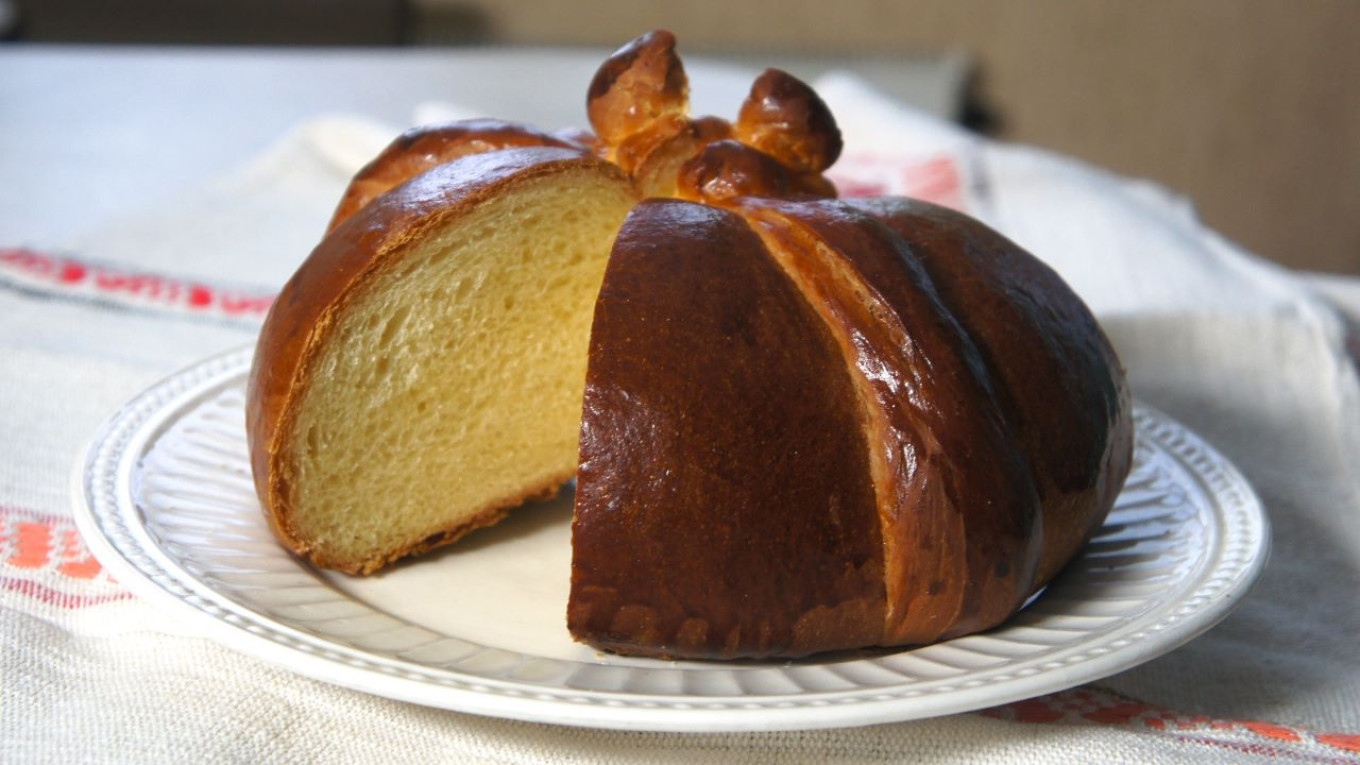
In the 19th century home cooks and chefs could bake this kind of kulich from recipes in the best known cookbooks. For example, in "Saint-Petersburg Cuisine" by Ignaty Radetsky (1862) kulich is made without a baking tin. “Roll out the dough and put it on a greased baking tray."
We found this kind of kulich in other places, too. Here is a painting by Nikolai Pimonenko, "Easter Eve in Little Russia," painted in 1891. Look more closely at this fragment below.
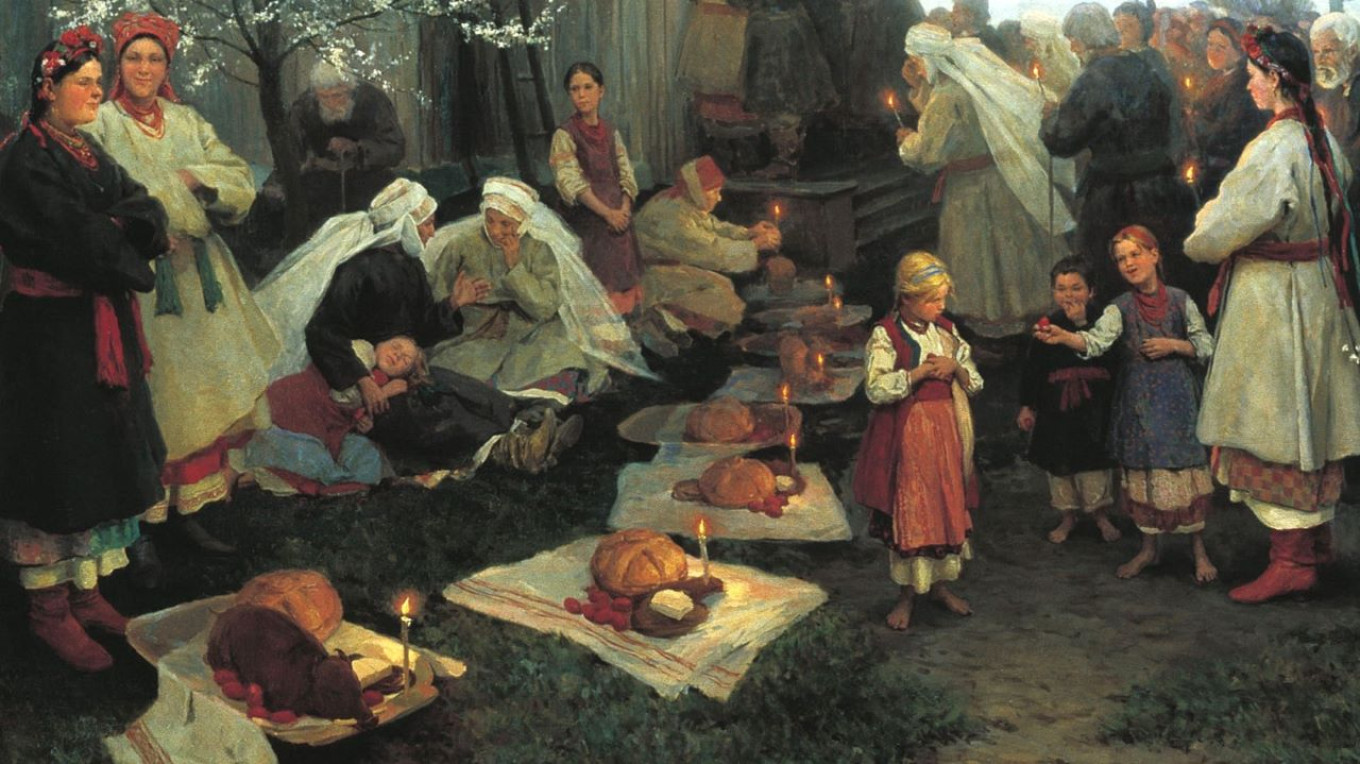
Those cakes certainly don’t look like today’s kulich. Someone might protest: "Well, this is Ukraine, in Russia it was completely different.” And he would be wrong. Vladimir Makovsky's painting "Pascha Prayer" (1887) that depicted Russian life shows this kind of flatter kulich. Take a look at a fragment of the painting of colored eggs and a homemade kulich.
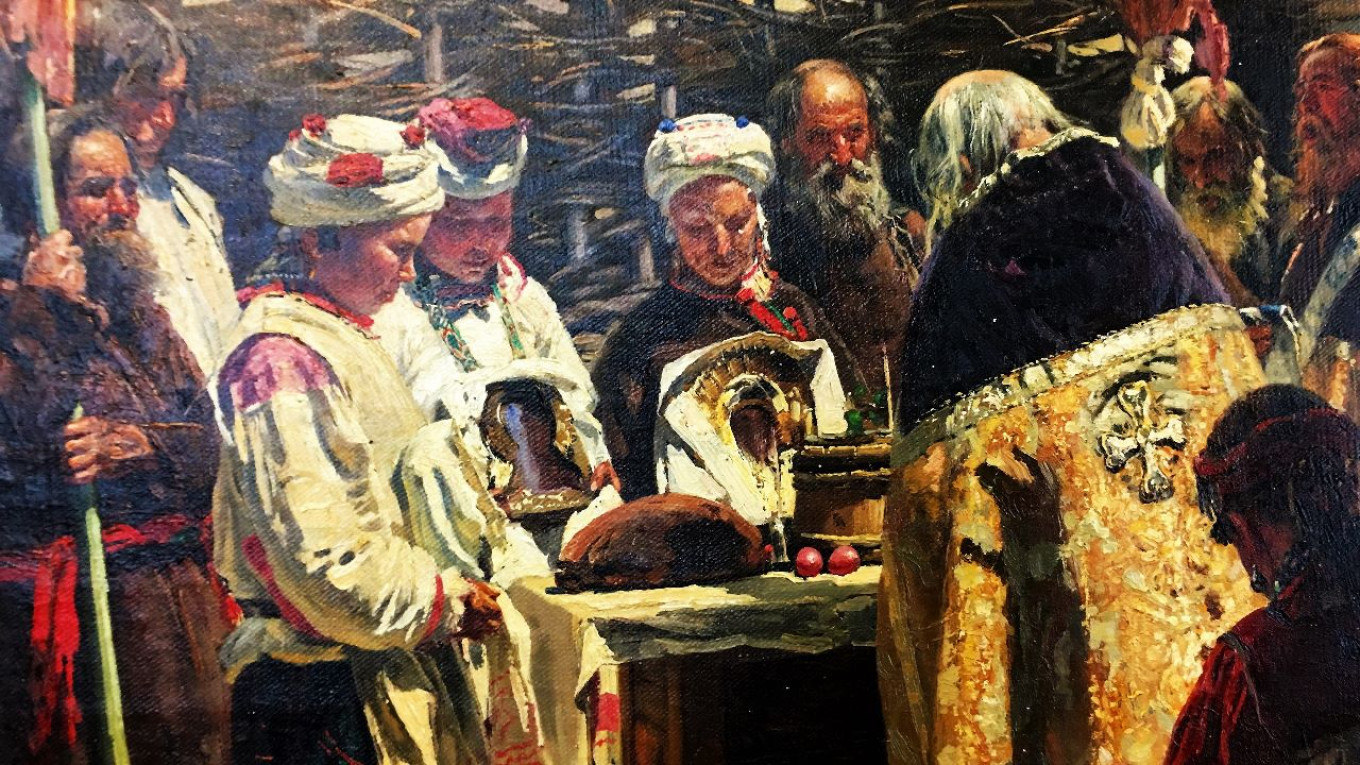
Here's an early twentieth-century Easter card. What lies on the table next to the painted eggs? A kulich, of course.
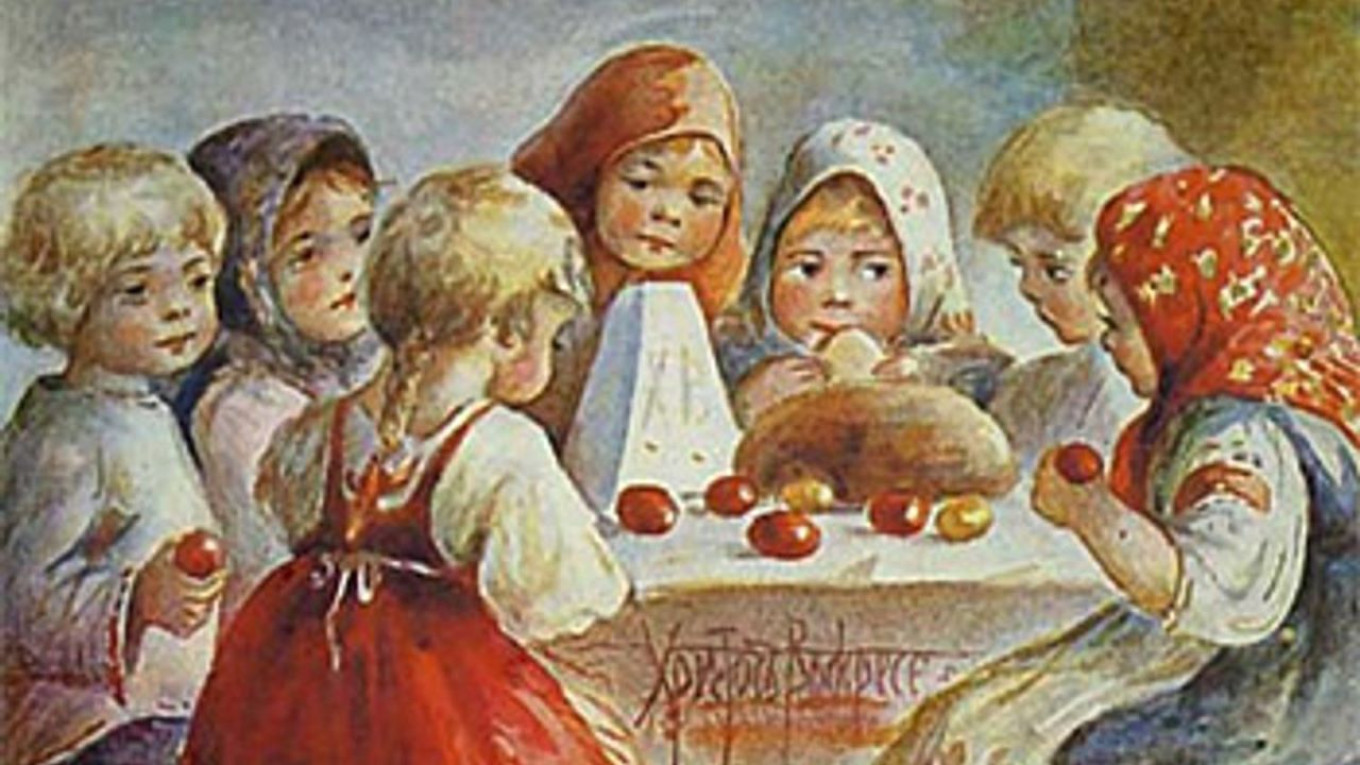
This tradition did not die even later when it would seem that it was easy to find a mold or round baking tin. Unlike today's kulich, the dough was denser, not airy. And if Radetsky describes it as part of elegant aristocratic cooking, then Pyotr Andreyev cites a recipe in his book "The Inexpensive Russian Table" (St. Petersburg 1898), that describes the very "democratic" menu of the poor: "Let the kulich rise, sprinkle with almonds and raisins, brush with an egg wash and put it in the oven.”
But when did the kulich take on its present form? First, let's try to remember what other baked goods remind us of today's festive tall kulich. The first that might come to mind is the “baba” — also called a babka or rum babka. In Soviet times, a rum babka was a small, sweet bun with raisins that fit in the palm of your hand. But in its classic form it looks a lot like kulich.
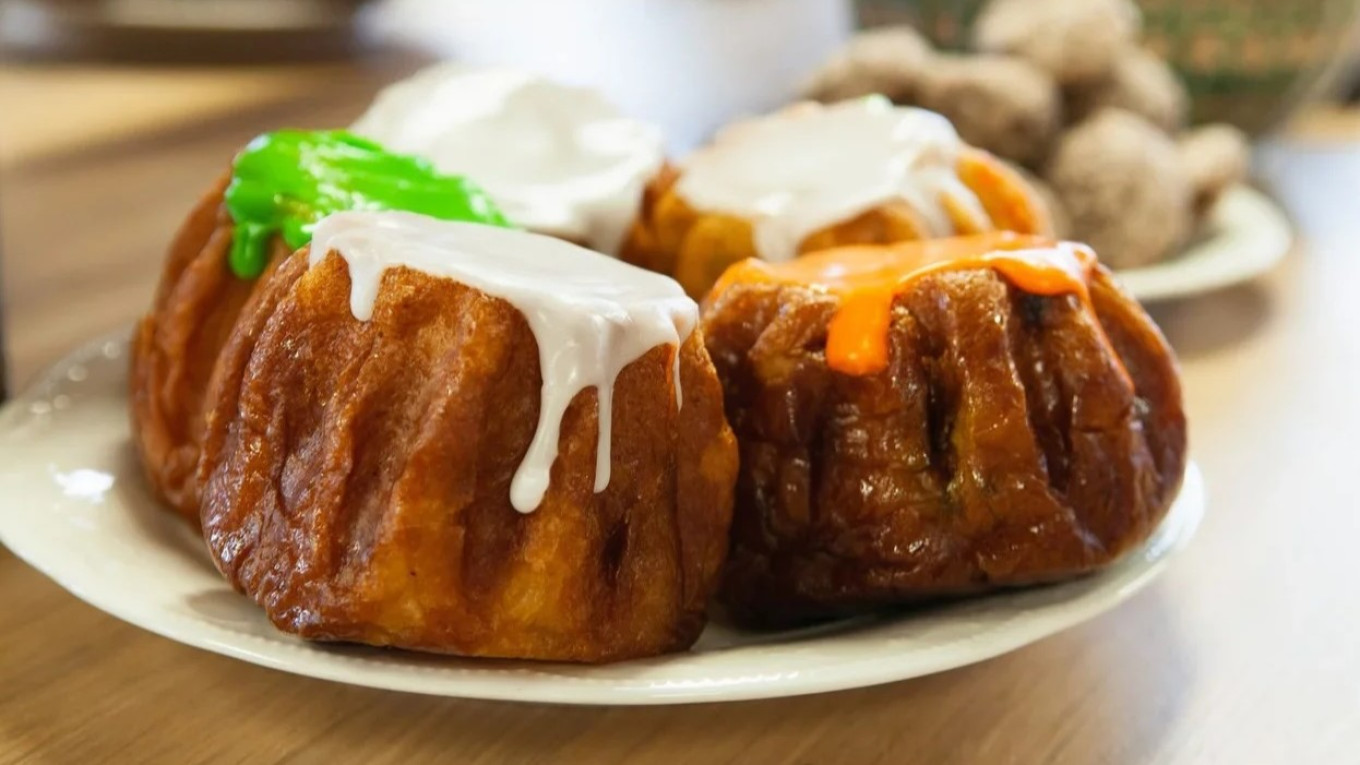
The history of the rum baba can be traced back to the 18th century. It is believed that in the 1720s, Nicolas Stohrer, a cook for the deposed Polish king Stanisław Leszczynski, brought the recipe for the "baba" to France. A connoisseur of good food, Leszczynski once dipped an Alsatian kouglof cake (which seemed dry to him) in wine. The result impressed him. A new dessert appeared, named after the king's favorite hero, Ali Baba.
This story that has been passed down over the centuries is quite appealing, even if it might not be true. The word "baba" or "babka" can be found in both Russian and Ukrainian cuisine, and has nothing to do with Ali Baba. But too much time has gone by to find out the real source of the name.
In any case, on Leszczynski's order, royal chef Stohrer improved the recipe and began using brioche dough with raisins to make his baba. This brioche baba was baked with saffron, saturated with Malaga wine and served with confectionery cream, raisins, and fresh grapes.
The famous French epicure Jean Anthelme Brillat-Savarin perfected the dish several decades later with his famous "rum baba" (Baba au Rhum). He invented a special rum syrup, which he used to saturate the baba instead of wine, and named his treat "Baba au Savarin." The dessert became very popular in France, but the first name stuck: rum baba.
Soon rum baba made its way with foreign chefs to Russia. A recipe for it first appears in the "Russian Cookery," published in 1795. By the mid-nineteenth century it had become quite a familiar dessert on the Russian table. But the memory of its origin was preserved. For example, in Ignaty Radetsky’s “St. Petersburg Cuisine” (1862) it is called King Stanislav’s Babka.
Once it was accepted in Russia, it began to spread throughout the country. Naturally, it began to compete with the old kulich. It’s no wonder: cooks always tried to make kulich as festive and rich as possible, and they learned how to make it soft and airy. And then along comes this "baba" — what seemed like the ideal of an elegant sweet bread, saturated with wine or rum. The two existed in parallel, but gradually there was a "replacement" of one dish with another. First wealthy homes that served fine cuisine began to bake their Easter kulich in a round tin, and then tall cakes baked in molds began to be sold in shops.
This process was consolidated during the Soviet period. Of course, the word "kulich" as a special dessert for Easter was not compatible with the atheistic Soviet way of life. So a new dessert called кекс (cake) appeared to replace the ancient dish. It didn’t have a religious association, and home cooks loved to make it. Soon Soviet bakeries began to make “May Cakes” that appeared in the spring around Easter and then disappeared until next year.
This proletarian alternative was supposed to oust the church kulich. It didn't.
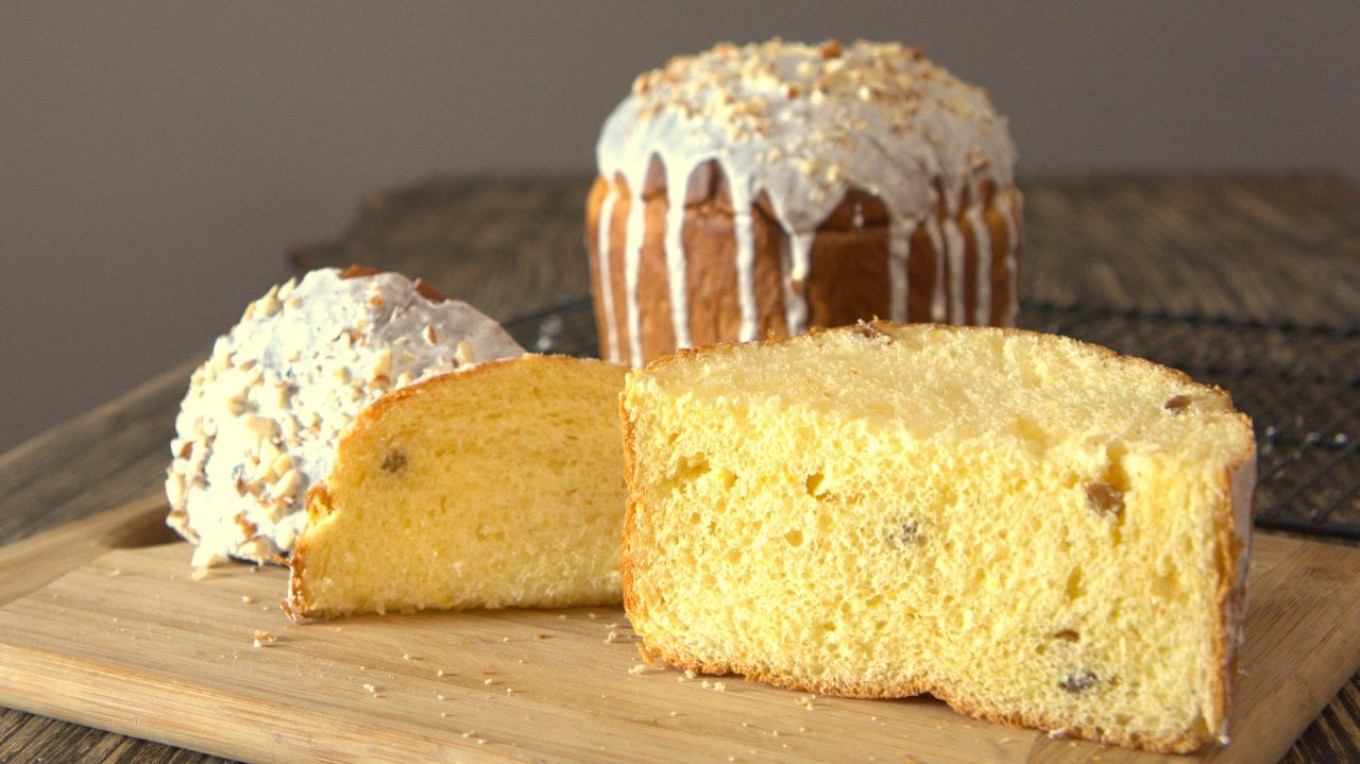
Kulich
For 2 round tins diameter of 16 cm, height 8 cm. Note that measuring by weight rather than volume will produce better results.
Ingredients
- 155 g (5.5 oz) 10% fat cream
- 310 g (11 oz) whole wheat flour with 13-14 g protein (Manitoba or durum semolina)
- 18 g (.64 oz) pressed yeast
- 75 g (2.6 oz) room temperature butter
- 70 g (2.5 oz) powdered sugar
- 1/2 teaspoon sugar
- 7 egg yolks
- 1/4 tsp salt
- Vanilla beans, vanilla sugar or vanilla essence
- 3 to 4 cardamom pods
- 75 g (2.6 oz) fine dark raisins
- 75 g (2.6 oz) candied fruits
- Saffron to taste
Instructions
- Heat the cream to a temperature of 30˚C/86˚F degrees, remove from the heat and crumble the yeast into it.
- Add 1/2 tsp sugar and stir to combine.
- Pour 140 grams (5 oz) flour into a container and pour in the cream and yeast. Stir to mix.
- Cover with clingfilm and leave to rise at room temperature for 2 hours.
- When the batter has risen and begun to settle, separate the egg yolks from the whites.
- Add salt and powdered sugar to the egg yolks.
- Beat until the sugar and egg yolks until the mixture turns white and becomes a thick, stretchy foam.
- In a separate bowl beat the butter until fluffy.
- Put the starter (the yeast mixture) in the bowl of a mixer and take alternately add the whipped egg yolks and the remaining flour; knead the dough until the gluten is moderately developed (when you can stretch a piece paper thin with some opaque areas and some “windowpane” areas that let light through).
- Add the beaten butter, vanilla or vanilla extract, crushed cardamom and crushed saffron (if desired) and knead the dough until the gluten is well developed. The dough will be soft, pliable and a little sticky. You can grease your hands with a little vegetable oil to make it easier to work the dough.
- Grease a large bowl with vegetable oil, form the dough into a ball and place it in the bowl. Cover with clingfilm and leave it to rise at room temperature for 1 hour and 40 minutes.
- Prepare the molds. Grease them with butter and put a circle cut out of baking paper on the bottom.
- When the dough has risen, knead it and add the raisins and candied fruits.
- Divide the dough into two parts, rounding each part. To prevent the dough from sticking to your hands, lightly grease your hands with vegetable oil.
- Place dough into the tins. They should not be more than 1/3 full (these rise high).
- Cover the tins with clingfilm and leave to rise for 1 hour to 1 hour and 30 minutes.
- Heat the oven up to 180˚C/350˚F.
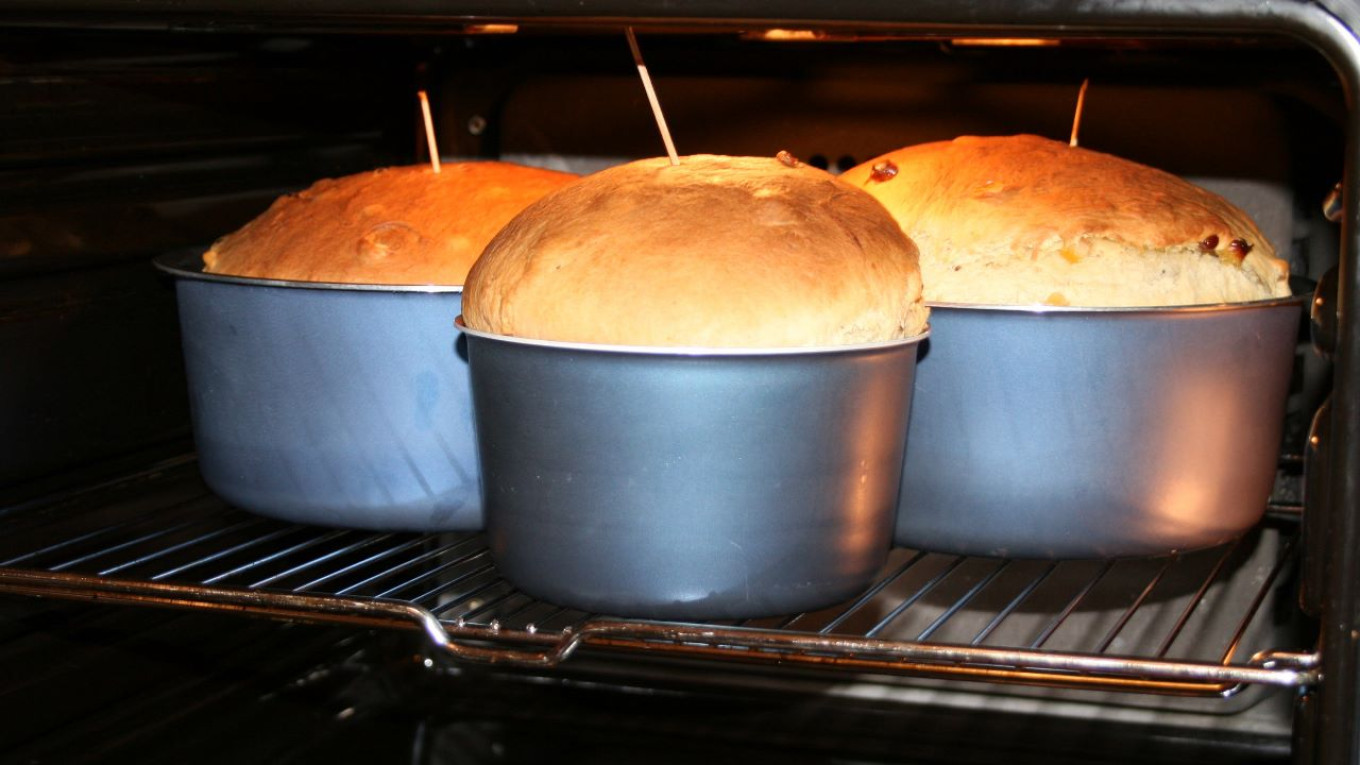
- When the cakes have risen (the tins should be about ¾ full) place them in the preheated oven. Kulich weighing 500 g bake for about 40 minutes. Check to see if they are done with a dry stick. Pierce the kulich gently; the stick should be absolutely dry without traces of dough. Another way is to weigh the kulich before and after baking. When ready, it will be 5-6 percent lighter.
- After baking, gently take the kulich out of the tin and put on a soft towel. Allow it to cool completely. You can periodically turn it from side to side, so it doesn’t lose its shape; kulich is very delicate.
- If desired, you can decorate the kulich with sugar fondant (storebought or homemade), and egg glaze or dried fruits.
A Message from The Moscow Times:
Dear readers,
We are facing unprecedented challenges. Russia's Prosecutor General's Office has designated The Moscow Times as an "undesirable" organization, criminalizing our work and putting our staff at risk of prosecution. This follows our earlier unjust labeling as a "foreign agent."
These actions are direct attempts to silence independent journalism in Russia. The authorities claim our work "discredits the decisions of the Russian leadership." We see things differently: we strive to provide accurate, unbiased reporting on Russia.
We, the journalists of The Moscow Times, refuse to be silenced. But to continue our work, we need your help.
Your support, no matter how small, makes a world of difference. If you can, please support us monthly starting from just $2. It's quick to set up, and every contribution makes a significant impact.
By supporting The Moscow Times, you're defending open, independent journalism in the face of repression. Thank you for standing with us.
Remind me later.



